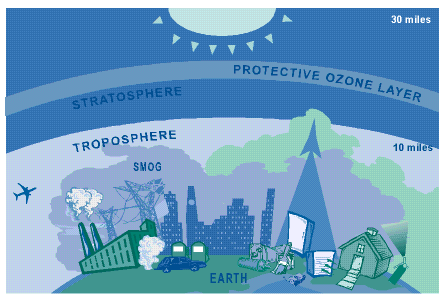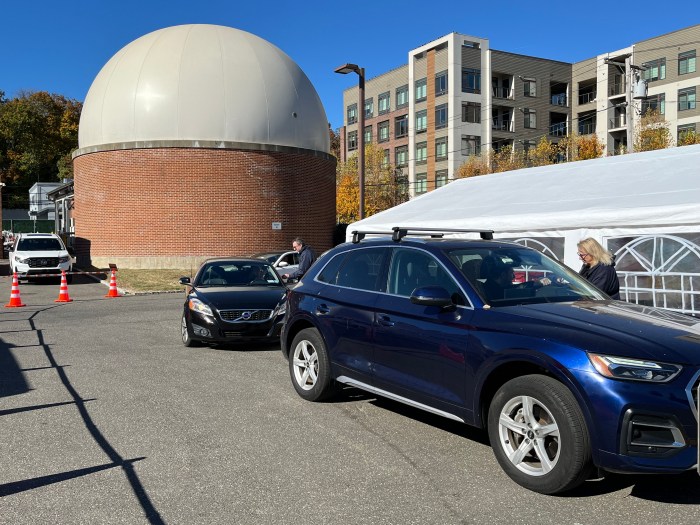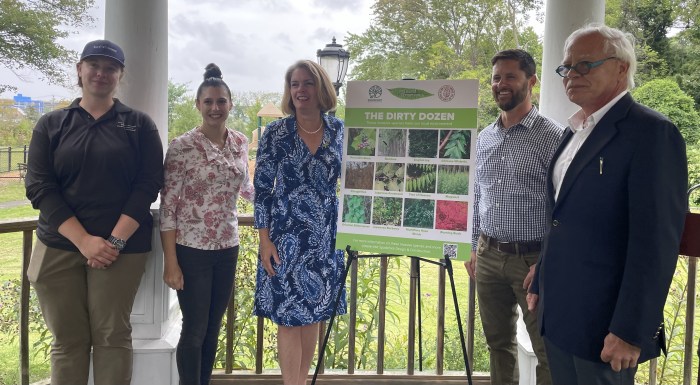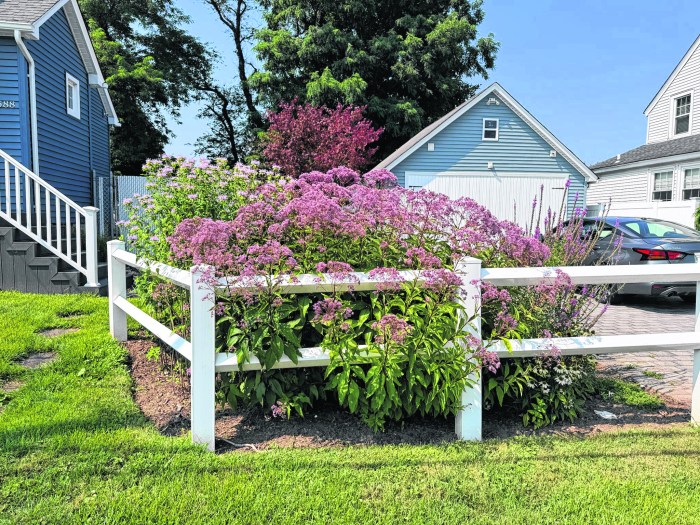 The American Lung Association’s State of the Air 2012 report finds that more than 3.2 million New Yorkers live in counties where unhealthy air endangers their lives and health.
The American Lung Association’s State of the Air 2012 report finds that more than 3.2 million New Yorkers live in counties where unhealthy air endangers their lives and health.
In this year’s report, six of the 34 counties in New York State with air quality monitors received failing grades, compared with 16 out of 34 counties in 2011.
On Long Island, Suffolk remains the dirtiest county in the state for ozone pollution and its grade for particle pollution worsened. It was the only county in the state to drop a letter grade for either pollutant. Meanwhile, Nassau’s levels for particle pollution improved slightly.
While significant progress continues to be made in cleaning up air pollution across the state, far too many New Yorkers still breathe unhealthy air. The standards set forth in the Clean Air Act to cleanup major air pollution sources-including coal-fired power plants, diesel engines, and SUVs-are working to drastically cut ozone (smog) and particle pollution (soot) from the air we breathe, even as the Act itself is being challenged in the halls of Congress.
“These improvements in air quality are to be applauded because cleaner air saves lives,” said Jeff Seyler, President and CEO of the American Lung Association in the Northeast. “But make no mistake, air pollution in our communities continues to be a major threat that cuts lives short, routinely sends people to the hospital and makes it hard to breathe. We not only need to defend the protections in the Clean Air Act that are responsible for the progress we’ve made, we need to fight for tighter standards that will ensure further progress and will lead to improved lung health and more lives saved.”
State of the Air 2012 found at www.stateoftheair.org grades counties based, in part, on the color-coded Air Quality Index developed by the U.S. Environmental Protection Agency (EPA) to help alert the public to daily unhealthy air conditions. The 13th annual release of the Lung Association’s report uses the most recent EPA data collected from 2008 through 2010 from official monitors for ozone and particle pollution, the two most widespread types of air pollution. Counties are graded for ozone, year-round particle pollution and short-term particle pollution levels. The report also uses EPA’s calculations for year-round particle levels. The American Lung Association identified the number of days that each county with at least one air quality monitor experienced air quality designated as orange (unhealthy for sensitive groups), red (unhealthy), or purple (very unhealthy), to determine the grades.
Significant findings from the report for Long Island include:
*Nassau County received a B for particle pollution. The county had one orange particle pollution days, one less than last year. Its annual level of the pollutant also improved slightly. Since Nassau County has no ozone monitor, it did not receive a grade for ozone.
* Suffolk County again received an F for ozone pollution and had the dirtiest air in the state when measured for ozone. This year the county had 33 orange days, compared with 34 in 2011. The county also had one red day, down from two in last year’s report. The county was only one of three counties in the state to experience a red day.
*Suffolk experienced one orange particle pollution day and earned a B in this year’s report. Last year the county experienced no unhealthy particle days and earned a spot on this list of cleanest counties for the pollutant.
Ozone, or smog-is the most widespread air pollutant. It is a gas formed most often when sunlight reacts with vapors emitted when motor vehicles, factories, power plants and other sources burn fuel. Breathing in ozone irritates the respiratory tract and causes health problems like asthma attacks, coughing, wheezing, chest pain and even premature death.
Particle pollution, called fine particulate matter or PM 2.5, is a deadly cocktail of ash, soot, diesel exhaust, chemicals, metals and aerosols that can spike dangerously for hours to weeks on end. The body’s natural defenses, coughing and sneezing, fail to keep these microscopic particles from burrowing deep within the lungs, triggering serious problems such as asthma and heart attacks, strokes, lung cancer and even early death.
There are many ways New Yorkers can help clean the air and protect themselves. Check the news for daily air quality levels and air pollution forecasts for your area. On days with elevated ozone or particle pollution, avoid exercising outdoors. Help reduce pollution by driving less, reducing electricity use, and refraining from burning wood. New Yorkers can also join our Lung Action Network to contact decision makers to voice their support for legislation that would make our air cleaner. They can also support efforts to improve air quality by participating in one of the American Lung Association’s Fight for Air walks or climbs being held across the Northeast this spring and fall.
For more information on air quality in New York visit us online at www.LungNE.org.


































